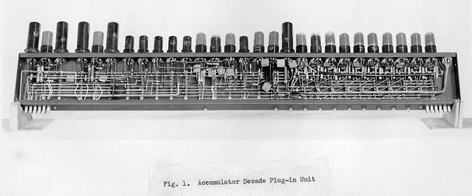Science in the 1940s
"Science is the search for truth. It is not a game in which one
tries to beat his opponent, to do harm to others."
--Linus Pauling
Penicillan developed as antibiotic.
Cyclotron for atomic research goes into operation at the University of California.
First freeze-drying of food.
First vaccine against leprosy.
Element plutonium discovered by a team of American scientists led by Glenn Seaborg.
Sulfadiazine becomes most widely used sulfa drug, effective against many types of infections.
First U.S. jet plane, Bell XP-59, flown.
First electronic digital calculator.
Dexedrine, a stimulant for the central nervous system, produced.
Army doctors prevent venereal disease with sulfathiazole.
Streptomycin, an antibiotic that fights bacterial infection.
DNA, building block of heredity in living things, isolated by Oswald Avery.
First atom bomb tested in desert at Alamogordo, New Mexico.
Scarlet fever successfully treated with pencillan.
Dr. Benjamin Spock's The Common Sense Book of Baby and Child Care is published.
Rocket-testing range established at White Sands, New Mexico.
ENIAC, often called the first computer, unveiled.
Mayo Clinic reports that the antibiotic streptomycin checks tuberculosis.
Sun found to emit radio waves.
Dead Sea Scrolls found near Qumran, in region of Jordan later occupied by Israel.
Polaroid camera.
Mumps vaccine developed.
Polio virus is isolated.
U.N. establishes World Health Organization.
200 inch mirror telescope dedicated on Mount Palomar, CA
Transistor invented.
American Cancer Society takes stand against cigarette smoking.
Cortisone is manufactured.
|

Vacuum tubes for the first computer.
|

